Finding the missing link in car-handling terminals
Terminal operators have been expanding their services in global markets with varying degrees of success. But in both the east and west, providers are using IT systems and new technology to improve planning and visibility.
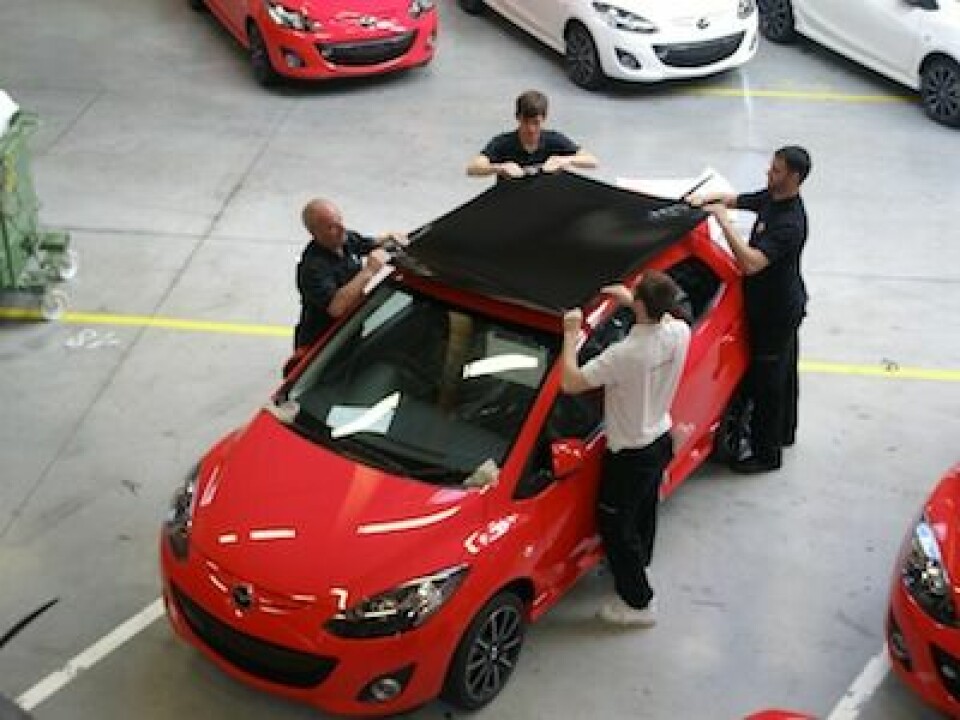
Vehicle-handling terminals are essential to the smooth and efficient flow at ports of imported or exported vehicles. Not only are cars inspected, processed and cleaned here, more advanced terminals are an extension of the assembly plant, modifying vehicles with accessories or custom features based on dealer orders or market preferences.
Operations at some of the world’s largest ports for handling vehicles in Europe and the US often set the standard for port processing, in terms of their IT and scheduling systems, labour management and advanced services. However, logistics providers and carmakers that run and use these facilities have developed dedicated vehicle terminal operations over the past decade from India to South America. And while the systems and processes – as well as customer expectations – in these regions still lag behind their western equivalents, terminal operators continue to invest and expand their offerings.
Best terminal practices
Examples of highly advanced processes can be found at Toyota Logistics Services (TLS), which manages vehicle imports for Toyota into the US and Mexico, as well as exports from the US, including at a number of in-house terminals. TLS or its partners provide services such as installing post-production options (PPO), final quality assurance, processing, regulatory labelling and transport loading.
Toyota’s logistics providers supplement in-house operations with other services including vehicle undercoating and vessel loading coordination, according to Brian Mason, national manager, strategic planning and communications at TLS.
Darren Acker, national manager of port operations at Glovis America, the logistics arm of Hyundai and Kia, says that the company’s objective is to process cars with a minimal number of touches and vehicle movements. The company also plays an essential role in vehicle accessories, including getting involved prior to the rollout of new products. Glovis also determines the labour time standards and it performs monthly testing on the accessorisation services for Hyundai and Kia, according to Art Lim, director of operations.
Glovis has a processing affiliate, Global Auto Processing Services (Gaps), which operates terminals at the ports of Philadelphia and Port Hueneme. President and chief executive officer Don Asdell says that reducing vehicle dwell time is as important for the company as maintaining a smooth flow of vehicles.
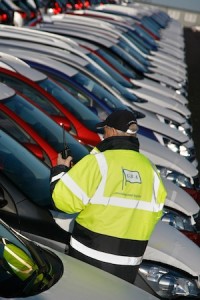
Kia Motors UK also relies on its ports for accessories and, since this past summer, pre-delivery inspection (PDI). The company’s head of supply chain, Awais Ajmal, uses a terminal from shipping line DFDS to import vehicles at the port of Immingham, in the Yorkshire and Humber region of England, before moving cars to a terminal operated by the GBA Group in nearby Killingholme for storage and processing (Kia expects to import 67,000 vehicles this year to UK). Since last year, Kia has used the port to do accessorisation for dealerships.
“We also began offering PDI in July at a lower cost than doing it at the dealer. This frees workspace for the dealers and enables them to sell more cars,” says Ajmal.
The terminal provider at the port of Koper, the largest hub for vehicle flows in southeast Europe, is Avtoservis, which performs PDI and modifications that can include converting passenger cars into light commercial vehicles or special-purpose vehicles, hygiene claddings, and the assembly of dividing grids and walls. It also installs mobile workshops with built-in drawers, sidewalls and floor coverings, styling kits, parking heaters, audio equipment and navigation systems.
Along with services like PDI and accessories, IT connectivity is an important part of a terminal’s overall service offering. Luka Koper, the port’s managing company, is upgrading its IT system to better integrate with those of its OEM customers, according to Gregor Belic, car terminal director. “Our current IT services include tracking and tracing and damage evaluation, among others. Next, our IT system will integrate with our customers’ quality standards, which will reduce the damage ratio,” claims Belic.
BRIC services
The expansion of such terminals in markets like China, India and Brazil are well underway, although there are variations in the services on offer and in demand from carmakers. At the port of Tianjin, in China, joint venture BLG Cinko Autotec offers storage, PDI and technical services that include repairing production defects, optional equipment installation and barcoding for entry into BLG’s IT system.
Michael Bünning, managing director of BLG Automobile Logistics, which also runs the port of Bremerhaven in Germany, says that for exports, BLG-Cinko Autotec is experiencing growing demand for services such as quality checks, maintenance and small modifications such as changing the steering wheel or installing air conditioning. “The need for technical services will become increasingly significant,” Bünning predicts. “Furthermore, damage prevention and claims management are slowly but steadily becoming more important.”

However, BLG Cinko Autotec is still offering services that are relatively new in China. Bünning suggests that few Chinese OEMs understand the value of its services when exporting vehicles.
“Although we sense a slight increase in Chinese OEMs’ understanding of quality improvement services, they still cite higher costs as their reason for not adopting them,” says Bünning. “Even damage rate competitiveness ranks below service rates in importance.”
Read here for more on Chinese vehicle ports.
Terminal operator ICO, a subsidiary of Japan’s NYK Lines, has a facility at India’s port of Mundra that handles exports exclusively for Maruti Suzuki, the country’s largest carmaker. ICO performs PDI, repairs and painting, accessorisation, quality inspection and yard management. However, the terminal is sometimes hampered by not yet having an IT system in place.
“Our terminal processes in Mundra are manual. At this point, we are using the OEM’s tracking and tracing system,” says Marc Adriansens, managing director at ICO. “At some point, we shall implement IT for stock management, terminal operations, control and PDI. In India, the challenge now is to improve the yard management system so that we may increase efficiency and reduce manual efforts.”
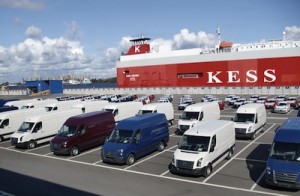
In Russia, Uwe Seliger, director of central eastern Europe and Russia at BLG, says he expects its terminal at the port of St Petersburg to increase to 200,000 square metres by the end of 2014 – double its size compared to 2011. BLG handles vehicles for Volkswagen at the port, with services including vessel loading and unloading, storage and maintenance. BLG also operates its own truck fleet for delivering vehicles to dealerships. Like most other ports in Russia, however, it is not yet providing PDI.
“Dealerships currently provide PDI. In the long term, we want to provide this service, and although there is demand now, it is not the time to invest,” says Seliger. “The market is not prepared for the port to handle PDI, but there is a need to maintain a consistently high quality level.”
Brazil-based BMS Logistics serves Volkswagen at the port of Santos through a terminal that Santos Brasil operates. At the port of Paranagua, a dedicated Volkswagen terminal also provides simple PDI. Overall, about one-third of PDI in Brazil occurs at the port and two-thirds at the plant, according to Stephan Grüner, general director.
“Accessorisation normally occurs at the dealerships. We have an interest in accessorisation in the medium or long term, but now the volume is too small,” he says. He adds that most vehicles remain at the port in Brazil for 15-30 days, during which time they are inspected, cleaned and labelled.
Grüner also points to developments in regions outside Brazil’s industrial and consumer heartland in Sao Paulo. The northeast region is growing faster than other areas and more manufacturers are locating there, which has led to the port of Suape handling imports (read here for more on South American ports).
“Vessels are calling the port of Suape, which avoids the need to truck from Sao Paolo. The question for us is whether to centralise our stock or decentralise it,” says Grüner, adding that BMS, which is another BLG joint venture (with Germany’s Mosolf), is looking at the port of Pernambuco and studying the feasibility of increasing PDI, yard management and warehousing services.
Brazil’s lengthy customs bureaucracy and infrastructure gaps lead to variation in processing times, while there are also shortages in vessel capacity. “Ro-ro vessels call the port of Paranagua three or four times monthly. With a higher vessel frequency, we would have a more standard processing time,” admits Grüner. “Volume affects velocity.”
"The issue here [in Brazil] is retention, due to a high turnover rate. For $20 more per month, a worker will change companies, so we need good benefits and human resources" - Stephan Grüner, BMS Logistics
Grüner also points to labour turnover in Brazil. “The issue here is retention, due to a high turnover rate,” says Grüner. “For $20 more per month, a worker will change companies, so we need good benefits and human resources.”
IT updates
Adapting IT systems to market demands is an essential part of managing vehicle terminals. The system used by BLG-Cinko Autotec is a BLG system called JC@rs, which provides data transfer via an electronic interface or web-based, real-time tracking from compound to final destination at the dealer. The system also provides order handling, damage management and assessment and customs clearance.
“JC@rs optimises handling by helping to control and route vehicle handling processes. All services, including inventory and storage, are coordinated automatically with respect to due date, priority and special conditions such as vehicles on hold,” explains Bünning.
In Brazil, BMS uses its terminal operator’s IT and also works inside Volkswagen’s information technology system. It registers quality measurements and statistics through a direct link to the Brazilian customs authorities.
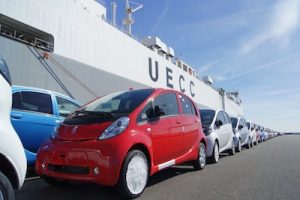
Although ICO has not implemented a system yet in India, it is making systems improvements at its other terminals at the ports of Zeebrugge and Antwerp in Belgium. Adriansens says that ICO has developed a new system with Aachen, Germany-based IT provider Inform, which is currently operating at the port of Antwerp and will be in place in Zeebrugge in October. Trucks use E-Gate, which eliminates waiting time at the gate and instructs the trucker on where to pick up the vehicle.
“The previous system was a historical database. We had to scan the car to know its position,” says Adriansens.
He says that ICO’s new system instructs the user where to position the car at the port, which had previously been a manual process. It also shows when each car goes to PDI. “Before, we would receive a lot of calls or e-mails from customers. If a car is on hold, the customer can see why,” says Adriansens. “In addition, the time a truck spends in the terminal has declined by 50%. Efficiency is up by 5% overall.”
At Toyota, best practices stem from its automated planning process, which is a part of the company’s National Port Processing System (NPPS). Brian Mason says that the system, which normally plans vehicle processing one or two days ahead, considers dealer assignment, sales office and dealer priorities, port PPO installation capacity, and PPO parts availability.
Toyota’s growing export business from the US, which rose 45% in 2012 to surpass 124,000 vehicles, has led to difficulties in managing the variety of information needed to support the shipments, including the number of destination countries. According to Brian Mason, this growth has led the company to increase the number of export terminals that it uses, including expanding or opening new services from the ports of Baltimore, Long Beach, Brunswick and Benicia this year alone.
On the import side, Toyota still has excess capacity at its terminals, particularly as the company has increased its North American production. “Thus, we are developing strategies to channel new volumes to our facilities,” says Mason.
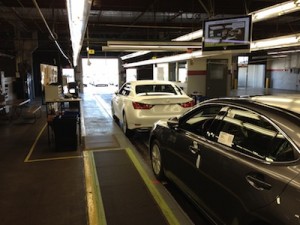
Although import growth has been subdued for Toyota, overall higher volumes at all of its port vehicle distribution centres have helped to improve the company’s logistics efficiency and lowered its overall cost per unit, according to Mason. He says that high demand has contributed to timelier dealer assignment, processing and delivery, as well as less unallocated inventory.
NPPS also tracks inventory, prints labels and production tags and supports rail and truck loading. For Toyota’s vehicle exports, TLS transmits the required shipping information to its respective 3PL partner at each location to support its vessel shipments and vehicle processing requirements.
Gaps, Glovis’s port processor, scans vehicles with WiFi-connected RF scanners and tablet computers. By using electronic tablets, it can photograph defects and notify customers immediately. In April, Glovis also launched its Port Quality Management System, which improves administrative efficiency by using electronic tablets to provide the final inspection reports in real-time. “Previously, it was purely manual. Now, we scan the VIN and the standard checklist is on the tablet,” says Lim.
Following its initial use of tables, Donald Acker says that the second phase will be even more active for Gaps and Glovis. “We hope to use the electronic tablet for load-line inspections and for warranty repairs. This should be in place by the end of 2014,” he says.
For Kia UK, the GBA terminal offers real-time interfaces and visibility down to the parking slot in which the vehicle is located. The system sends GBA work instructions and uses SAP to connect all of the involved parties, including headquarters, plants, sales and finance departments and the dealer extranet system. Dealers place an order to Kia, which transmits it to GBA. Kia either calls off the vehicle, or overrides the system and looks manually if it is an urgent or specialty order. “For call offs, we touch the vehicle only once to in order to minimise the damage level,” says Ajmal.
At the Port of St Petersburg, BLG‘s system is linked to that of the port as well as the vehicle manufacturers.
“In July, we completed a test version linking the trucking. We are monitoring the transit time and related measurements, and are working on improving it,” says Seliger.
Moving towards better scheduling
Perhaps one of the most desired IT functions for port terminals is that of scheduling, which controls the flow of vehicles through the terminal. While ports tend to have production-processing plans, there are many that don’t have scheduling functionality.
Acker says that Glovis is developing a system to observe volume and hours of work required for production planning. Gaps is already doing production planning by VIN with a focus on the labour time to complete a vehicle’s requirements, as well as FIFO (first in, first out – an optimal way of parking vehicles).
“We then take an average of all vehicles that we need to process so that we may balance our workload and adjust our staff level,” says Asdell.
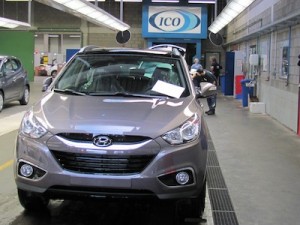
Volume fluctuations are often a challenge, particularly as a result of variation in vessel scheduling. With high volumes and vessel bunching, it is more difficult to secure the space to discharge the vessel and maintain short dwell times.
“We need to increase our productivity as much as possible so that we may reduce the dwell time,” explains Asdell. “For high volumes, we add temporary labour, increase production on the second and third shifts, and work daily and weekend overtime.”
Belic says that at Koper improving the terminal management of truck arrivals with a scheduling system is a top priority.
“Our upcoming new scheduling system will facilitate planning on a daily basis. It will also enable FIFO vehicle preparation, and will shorten the waiting time for truck drivers,” he says.
The use of more advanced scheduling systems at port terminals could lead to a smoother flow of vehicles across the supply chain, including inland and pre-carriage transport. While ports in the US and Europe are taking the lead in implementing such systems, terminals in global locations won’t be far behind.





